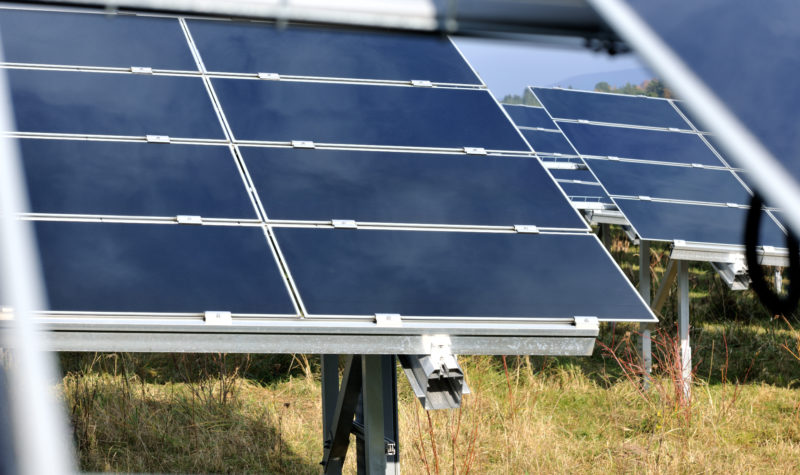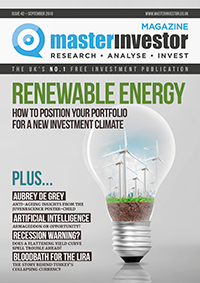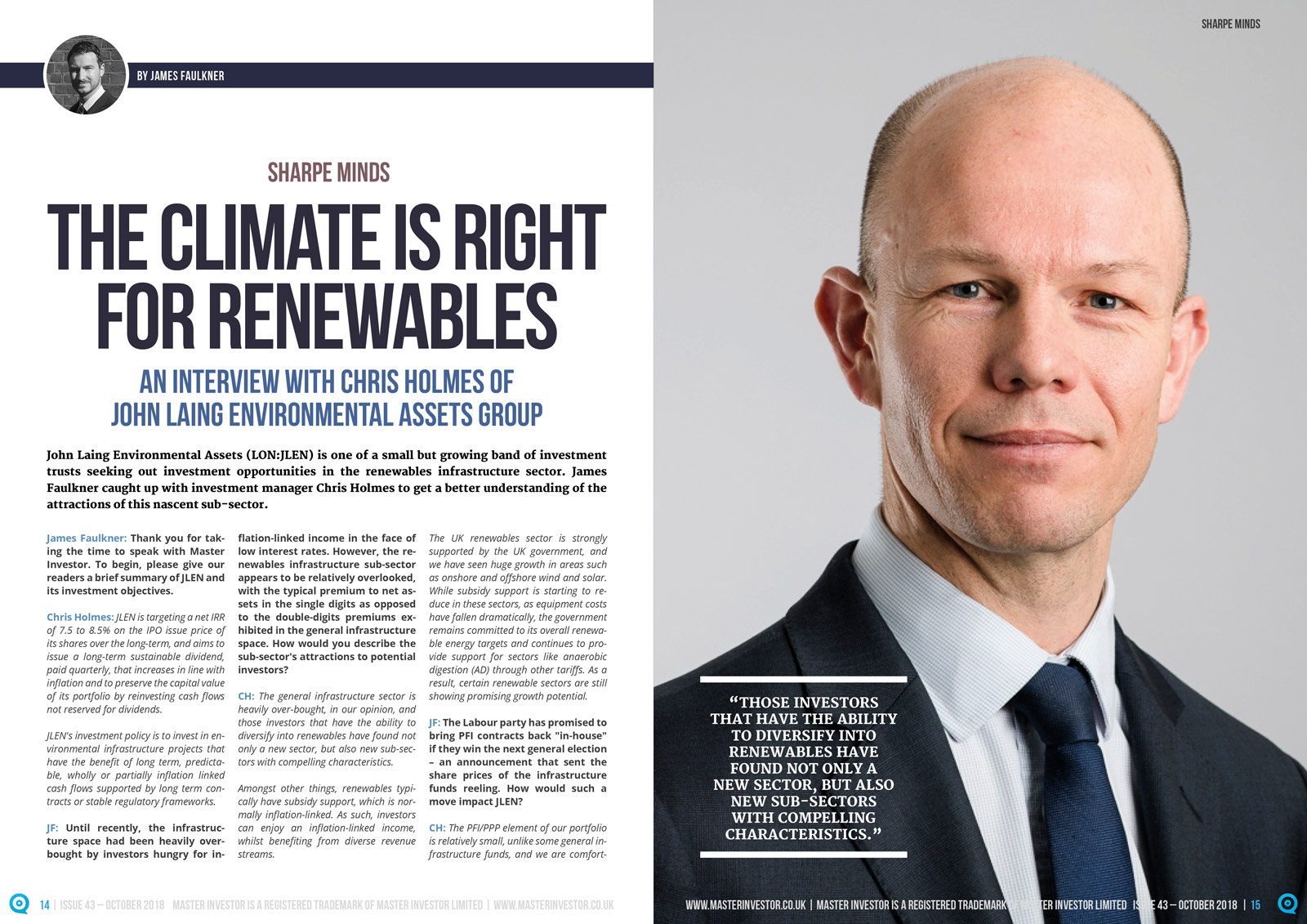The climate is right for renewables – MAGAZINE EXCLUSIVEMAGAZINE EXCLUSIVE

MAGAZINE ARTICLE
This article first appeared in Issue 42 of Master Investor Magazine.
Click here to download the article as a printer-friendly PDF

Get this article and many more – for free! |
An interview with Chris Holmes of John Laing Environmental Assets Group
John Laing Environmental Assets (LON:JLEN) is one of a small but growing band of investment trusts seeking out investment opportunities in the renewables infrastructure sector. James Faulkner caught up with investment manager Chris Holmes to get a better understanding of the attractions of this nascent sub-sector.
James Faulkner: Thank you for taking the time to speak with Master Investor. To begin, please give our readers a brief summary of JLEN and its investment objectives.
Chris Holmes: JLEN is targeting a net IRR of 7.5 to 8.5% on the IPO issue price of its shares over the long-term, and aims to issue a long-term sustainable dividend, paid quarterly, that increases in line with inflation and to preserve the capital value of its portfolio by reinvesting cash flows not reserved for dividends.
JLEN’s investment policy is to invest in environmental infrastructure projects that have the benefit of long‑term, predictable, wholly or partially inflation‑linked cash flows supported by long‑term contracts or stable regulatory frameworks.
JF: Until recently, the infrastructure space had been heavily overbought by investors hungry for inflation-linked income in the face of low interest rates. However, the renewables infrastructure sub-sector appears to be relatively overlooked, with the typical premium to net assets in the single digits as opposed to the double-digits premiums exhibited in the general infrastructure space. How would you describe the sub-sector’s attractions to potential investors?
CH: The general infrastructure sector is heavily over-bought, in our opinion, and those investors that have the ability to diversify into renewables have found not only a new sector, but also new sub-sectors with compelling characteristics.
Amongst other things, renewables typically have subsidy support, which is normally inflation-linked. As such, investors can enjoy an inflation-linked income, whilst benefiting from diverse revenue streams.
The UK renewables sector is strongly supported by the UK government, and we have seen huge growth in areas such as onshore and offshore wind and solar. While subsidy support is starting to reduce in these sectors, as equipment costs have fallen dramatically, the government remains committed to its overall renewable energy targets and continues to provide support for sectors like anaerobic digestion (AD) through other tariffs. As a result, certain renewable sectors are still showing promising growth potential.
| Would you like to explore even more investment opportunities? Find them at ‘Master Investor in focus: Investing into alternative energy’ on 11 October 2018 in London.
A selected few free tickets are still available. Book now to avoid disappointment. |
JF: The Labour party has promised to bring PFI contracts back “in-house” if they win the next general election – an announcement that sent the share prices of the infrastructure funds reeling. How would such a move impact JLEN?
CH: The PFI/PPP element of our portfolio is relatively small, unlike some general infrastructure funds, and we are comfortable with the protections we have under our contracts. In addition, JLEN’s portfolio of renewable assets is well-diversified, covering wind, solar and AD.
JF: Unlike other renewables infrastructure trusts, you have a large portion of your portfolio invested in waste and water management. How do the investment characteristics of this arena stack up against the other renewables in the portfolio?
CH: We have a small number of investments in water and waste management. They are exposed to different market dynamics to generate their returns which provide useful diversification across our portfolio, and they are backed by strong, stable contractual payment mechanisms under their PFI contracts.
JF: The wind and solar spaces must be pretty crowded by now. How hard is it to secure attractive wind and solar assets at the right prices?
CH: We would agree that the wind and solar space is a competitive market and are mindful of returns we need to target for our investors. While we still expect to acquire some assets in these sectors, we have focused on other sectors of the renewable energy space, such as AD, which offer comparatively better returns against this crowded environment.
JF: You recently raised £15.5 million in an institutional fundraising to invest in the biomass and anaerobic digestion space. What is it about this sub-sector that interests you the most as investors?
CH: The factor which interests us the most about the AD space is that we think it moves the metrics in our fund in all the right directions around increasing diversification, increasing inflation-linkage, reducing our exposure to merchant power markets and reducing the leverage within the portfolio.
JF: The recent investment into Vulcan Renewables represents your first investment in a construction project. Does this introduce a new element of risk into the portfolio? What is the logic behind this move?
CH: JLEN has always had the ability to invest into construction phase assets. It is important to recognise that Vulcan Renewables is an existing operational asset that we already own and, therefore, the additional risk associated with extension of the site, conducted by our business partner Future Biogas, is perfectly manageable. We are looking forward to a successful delivery and enhanced revenues once the Vulcan works are completed.
JF: The geographic spread of the portfolio is currently limited to the UK and France. Given that a major risk for JLEN is regulatory and legislative risk, are there any plans to expand the portfolio into other jurisdictions?
CH: Whilst our portfolio contains assets in the UK and France, we have a mandate to invest in projects that are located in OECD countries. As a result, we will always explore good investment opportunities in those safe jurisdictions, where they offer a compelling return relative to the risk. It is worth noting, though, that at least 50% of the JLEN portfolio (by value) will always be based in the UK.
JF: How has the recent collapse and subsequent recovery of the oil price affected the demand for renewable energy and renewables assets?
CH: Media and market attention around oil prices has put a new focus on renewables and long-term energy options. There is a concerted drive by governments, as seen with the Paris Climate Accords, to move away from fossil fuels and encourage more renewable assets. As such, we are still seeing strong regulatory support in the sector.
JF: How have the recent changes to the Renewable Obligation and feed-in tariff schemes impacted the sector?
CH: As an acquirer of primarily operational assets in the renewable energy sector, we are observing the trend of governments to gradually reduce the reliance on subsidies for development of new projects. However, those assets that we are currently acquiring which were built a number of years ago still receive strong subsidy support.
JF: As investors in the renewables space, what’s your take on the recent bout of extreme weather we’ve been subjected to? Are the authorities doing enough to reduce carbon emissions? How do you see the renewables space evolving in the future?
CH: We are well-placed to manage changing weather conditions, and this summer has reinforced the benefits of having a diversified portfolio across wind, solar, waste and water management and AD. To give you an example, if wind generation is lower than previous years, but there is strong solar irradiation, then the returns generated across a balanced portfolio should offer greater stability than for one concentrated on a particular sector.
About Chris Holmes
Chris joined the Investment Adviser in January 2018. Prior to this, Chris was a Managing Director and Head of Waste & Bioenergy team at the Green Investment Group (formerly the UK Green Investment Bank plc) for four years. During his time at Green Investment Group, Chris was responsible for over £0.5 billion of investment across 18 assets in the waste and biomass sectors.
Before taking up his position at the Green Investment Bank plc, Chris was Head of Capital Markets in the Infrastructure and Renewables team at NIBC, also with responsibility for UK debt origination and advisory within these sectors. Chris was with NIBC for over 12 years, working on a number of waste and bioenergy transactions.
Chris has a BA in Business Economics from the University of Durham.

|
Comments (0)